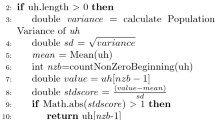Abstract
Virtualization technology promises to provide better isolation and consolidation in traditional servers. However, with VMM (virtual machine monitor) layer getting involved, virtualization system changes the architecture of traditional software stack, bringing about limitations in resource allocating. The non-uniform VCPU (virtual CPU)-PCPU (physical CPU) mapping, deriving from both the configuration or the deployment of virtual machines and the dynamic runtime feature of applications, causes the different percentage of processor allocation in the same physical machine,and the VCPUs mapped these PCPUs will gain asymmetric performance. The guest OS, however, is agnostic to the non-uniformity. With assumption that all VCPUs have the same performance, it can carry out sub-optimal policies when allocating virtual resource for applications. Likewise, application runtime system can also make the same mistakes. Our focus in this paper is to understand the performance implications of the non-uniform VCPU-PCPU mapping in a virtualization system. Based on real measurements of a virtualization system with state of art multi-core processors running different commercial and emerging applications, we demonstrate that the presence of the non-uniform mapping has negative impacts on application’s performance predictability. This study aims to provide timely and practical insights on the problem of non-uniform VCPU mapping, when virtual machines being deployed and configured, in emerging cloud.











Similar content being viewed by others
References
Barham, P., Dragovic, B., Fraser, K., et al.: Xen and the art of virtualization. In: Proceedings of the 19th ACM Symposium on Operating Systems Principles (2003). doi:10.1145/1165389.945462
Amazon elastic compute cloud: http://aws.amazon.com/ecs2 (2011). Accessed 03 March 2011
Uhlig, V., LeVasseur, J., Skoglund, E., et al.: Towards scalable multiprocessor virtual machines. In: Proceedings of the 3rd Virtual Machine Research & Technology Symposium (2004)
Chen, P.M., Noble, B.D.: When virtual is better than real. In: Proceedings of the Eighth Workshop on Hot Topics in Operating Systems (2001)
Kim, H., Lim, H., Jeong, J., et al.: Task-aware virtual machine scheduling for I/O performance. In: Proc. of VEE’09 (2009). doi:10.1145/1508293.1508308
Weng, C., Wang, Z., Li, M., et al.: The hybrid scheduling framework for virtual machine systems. In: Proceedings of the 2009 ACM SIGPLAN/SIGOPS International Conference on Virtual Execution Environments (2009). doi:10.1145/1508293.1508309
Wells, P.M., Chakraborty, K., Sohi, G.S.: Hardware support for spin management in overcommitted virtual machines. In: Proc of PACT’06 (2006). doi:10.1145/1152154.1152176
Lee, M., Krishnakumar, A.S., Krishnan, P.: Supporting soft real-Time tasks in the Xen hypervisor. ACM SIGPLAN Not. 45, 97–108 (2010). doi:10.1145/1837854.1736012
Credit scheduler: http://wiki.xensource.com/wiki/Credit_Scheduler (2011). Accessed 10 January 2011
Jain, R., Chiu, D.-M., Hawe, W.: A quantitative measure of fairness and discrimination for resource allocation in shared computer system. Technical report, Digital Equipment Corporation (1984)
Apache: http://httpd.apache.org (2010). Accessed 10 September 2010
Transaction Processing Council: http://www.tpc.org (2010). Accessed 15 October 2010
Bienia, C., Kumar, S., Singh, J.P., et al.: The PARSEC benchmark suite: characterization and architectural implications. In: Proceedings of the 17th International Conference on Parallel Architectures and Compilation Techniques (2008). doi:10.1145/1454115.1454128
Stanford Parallel Applications for Shared Memory (SPLASH): http://www-flash.stanford.edu/splash (2010). Accessed 15 October 2010
OpenMP Architecture Review Board OpenMP Specifications for Fortran/C/C++ Version 2.0, http://openmp.org/wp/openmp-specifications/ (2011). Accessed 20 February 2011
Gupta, D., Cherkasova, L., Gardner, R., et al.: Enforcing performance isolation across virtual machines in Xen. In: Proceedings of Middleware 2006, pp. 342–362. Springer, Berlin (2006). doi:10.1007/11925071_18
Tikotekar, H.O., Alam, S., et al.: Performance comparison of two virtual machine scenarios using an HPC application: a case study using molecular dynamics simulations. In: Proceedings of 3rd Workshop on System-level Virtualization for High Performance Computing (2009). doi:10.1145/1519138.1519143
Balakrishnan, S., Rajwar, R., Upton, M., et al.: The impact of performance asymmetry in emerging multicore architectures. In: Proceedings of the 32nd Annual International Symposium on Computer Architecture (2005). doi:10.1109/ISCA.2005.51
Kazempour, V., Kamali, A., Fedorova, A.: AASH: an asymmetry-aware scheduler for hypervisors. In: Proceedings of the 6th ACM SIGPLAN/SIGOPS International Conference on Virtual Execution Environments (2010). doi:10.1145/1837854.1736011
Acknowledgement
The work is supported by National 973 Basic Research and Development Plan of China under grant No. 2007CB310900.
Author information
Authors and Affiliations
Corresponding author
Rights and permissions
About this article
Cite this article
Zhong, A., Jin, H., Wu, S. et al. Performance implications of non-uniform VCPU-PCPU mapping in virtualization environment. Cluster Comput 16, 347–358 (2013). https://doi.org/10.1007/s10586-012-0199-6
Received:
Accepted:
Published:
Issue Date:
DOI: https://doi.org/10.1007/s10586-012-0199-6




